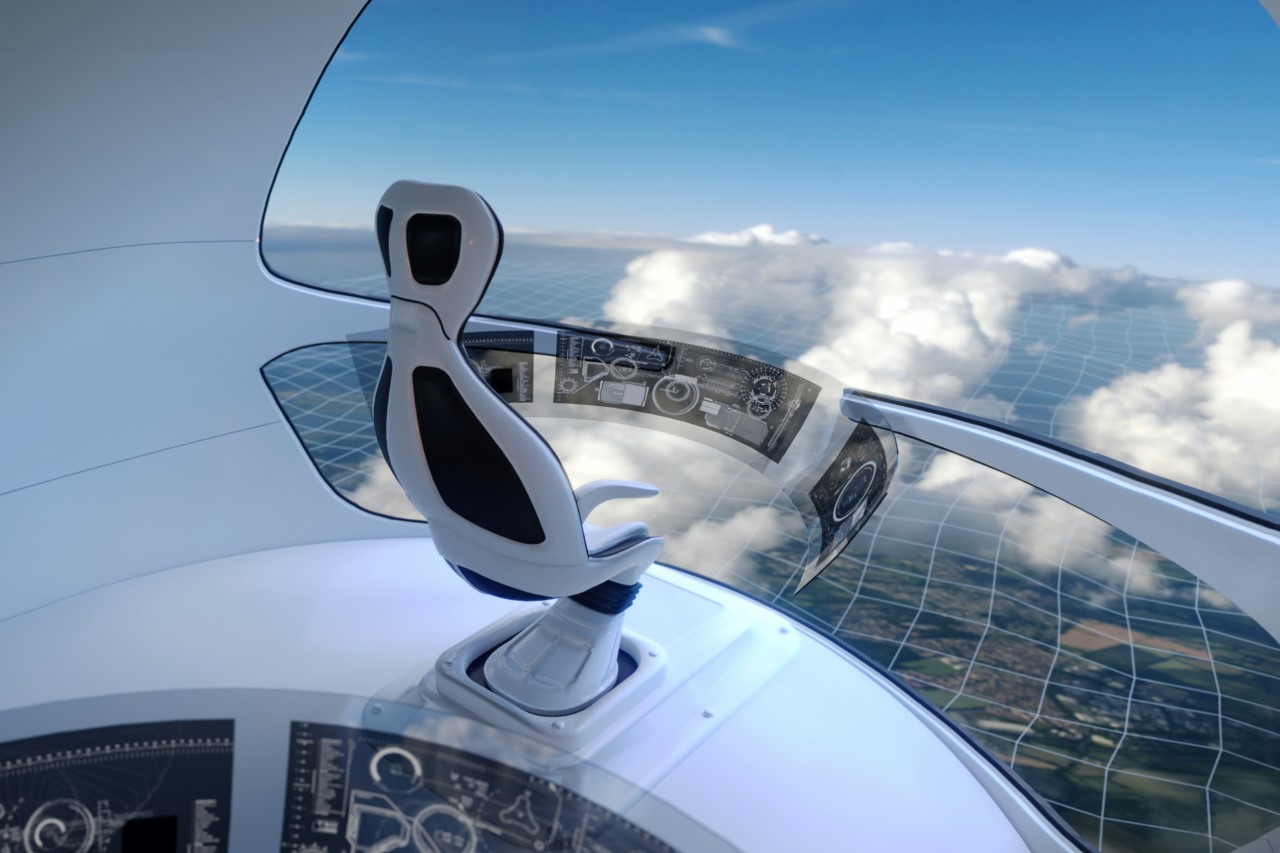
Over the course of 120 years, air travel has undergone a remarkable transformation.
Gone are the days of long flights with nothing to do except for stare outside the window as you eat your overpriced peanuts. Nowadays, passengers can enjoy perks like high-speed Wi-Fi, gourmet meals, and an endless selection of entertainment options. Yet, the quest for innovation continues. As shown by the latest patents from aerospace engineers, we can expect to see even more exciting developments in the near future. From VR-equipped seating, communal bathrooms, and robotic in-flight service carts, the airplanes of tomorrow promise to be even more incredible than ever before.
These rendered versions of actual patent files from airlines and aerospace companies paint a rather vivid picture of what the future of flight could be like, for pilots, crew, and even passengers. If the future is even half as exciting, we’re definitely in for a ride!
Designer: NeoMam Studios for HawaiianIslands.com
Virtual Cockpit by Airbus
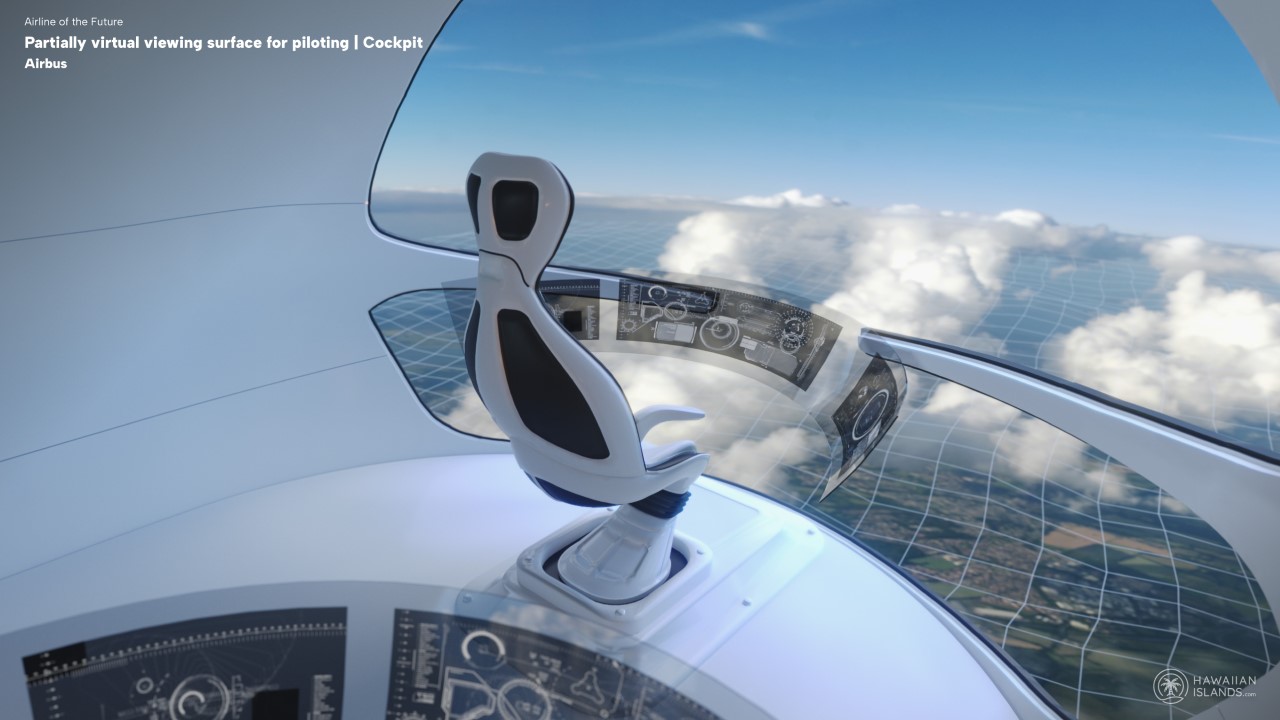
Admittedly the flashiest patent file of the lot (not by a big margin, though), is this Virtual Cockpit by AirBus, which puts the pilot literally on cloud nine. With a panoramic glass facade on the front, and transparent OLED displays, this cockpit definitely feels a lot more interesting than the current kind we have. The various displays might offer a live video feed or 3D/augmented reality reconstruction of what’s outside; the 3D reconstruction could be loaded from a database and/or updated in real-time using live data. Can’t wait to try this one out in Flight Simulator…
First Class Interactive System by Airbus
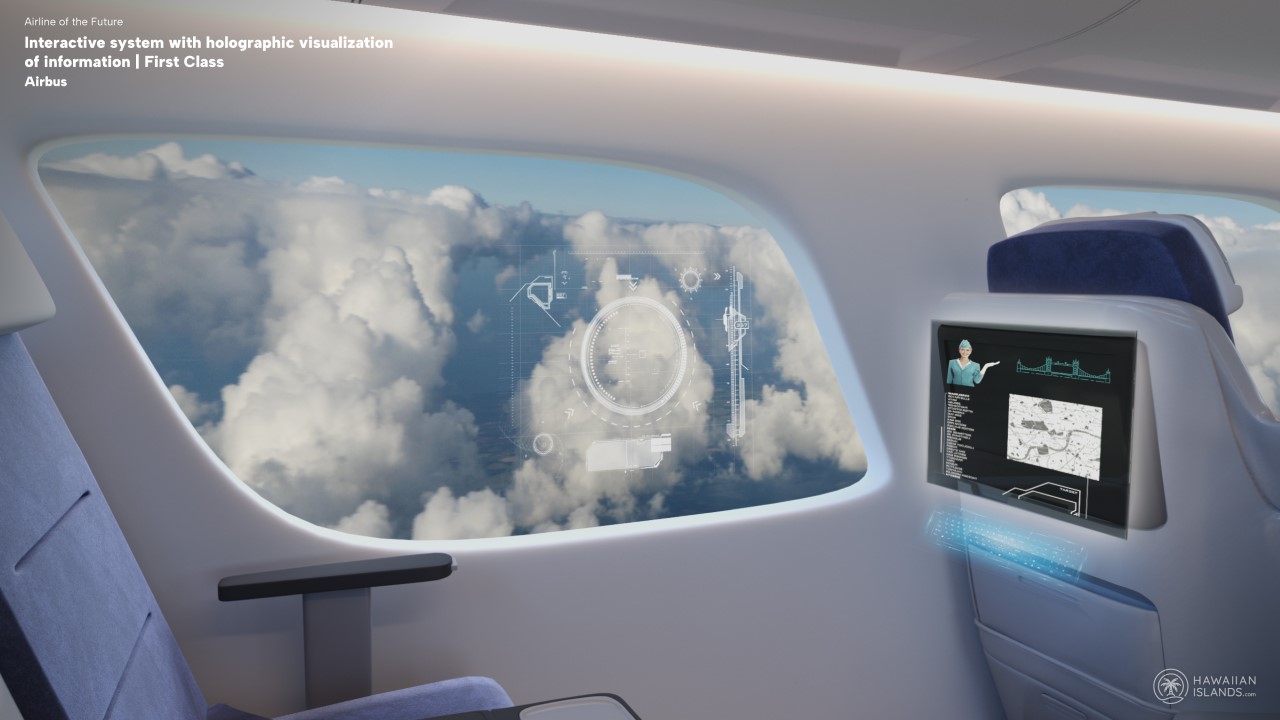
Airbus further extends this holographic technology to the passenger’s seat, with holographic infotainment systems on the front, and even on the window, letting you see your flight path against the stellar view of clouds. You might as well ditch your eye-mask at this point because there’s no way you’ll even want to sleep with this kind of information and technology at your fingertips. Author Will Self once lamented that we’ve lost our sense of awe at “being hurled by vast jet engines six miles high, then impelled down an Aeolian slalom into another time zone.” This patent by Airbus brings back that sense of awe.
Herringbone Seating by British Airways
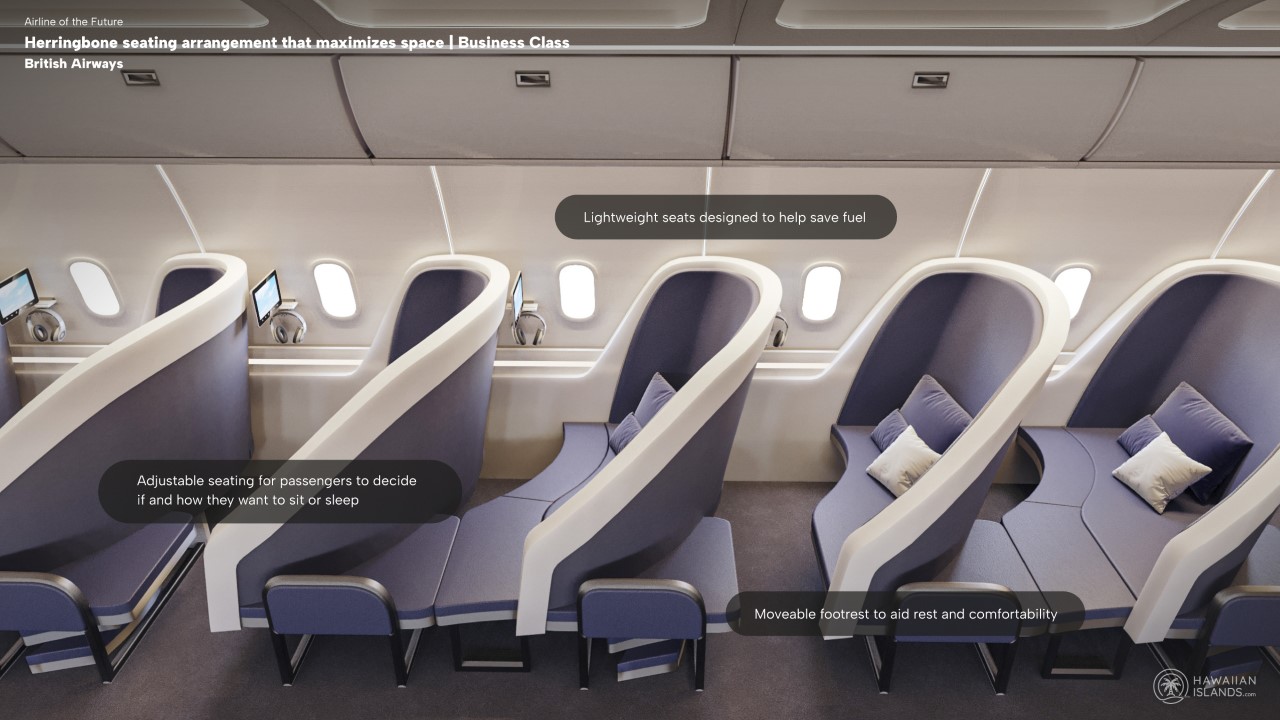
Business passengers tend to spend much of their time in the sky, which certainly calls for the need for a more comfortable riding experience for these premium customers. The sleek, herringbone formation of the seats optimizes space, providing ample room for business passengers to stretch out into the recess of the seat ahead. The seats are wide, rather than deep, and curve sideways like a chaise lounge to offer a way to recline and sleep without actually reclining the seat itself. Each seat is paired with a tail-shaped table of the same size, which offers enough space to store essential items underneath.
Foldable Swivel Seats by Boeing
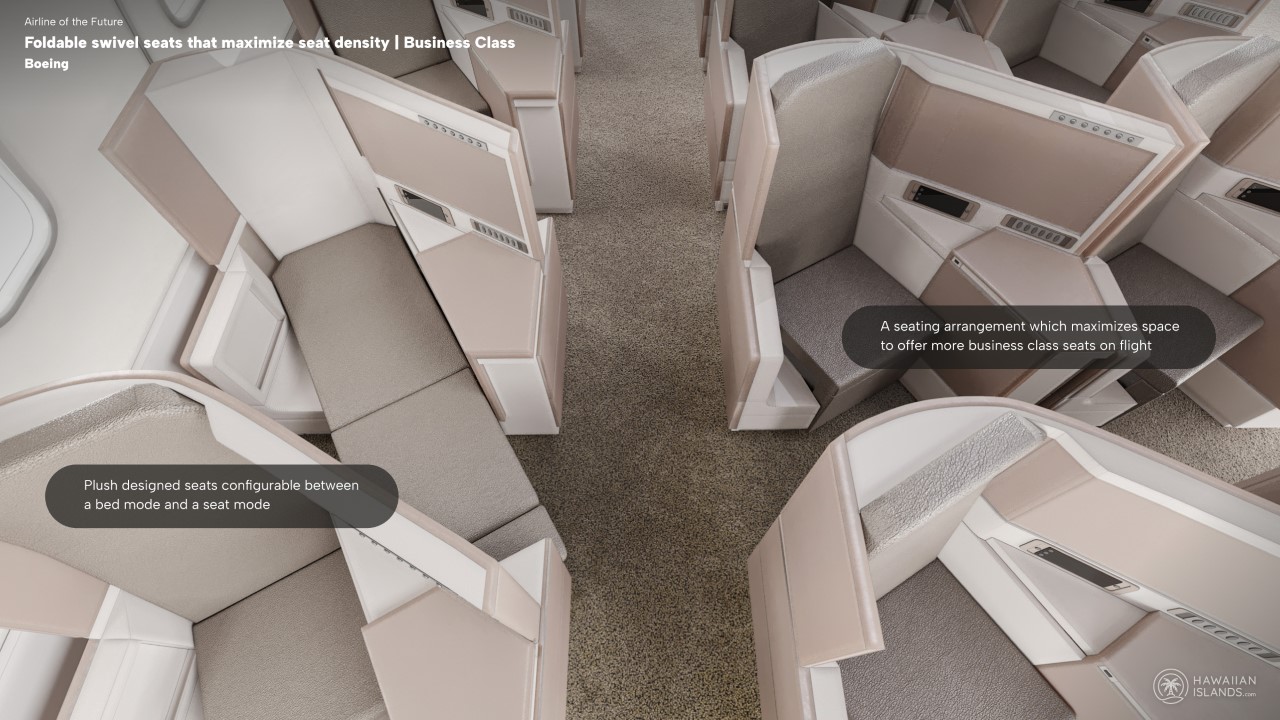
While the previous patent focused on space and comfort, this one plays around with the idea of offering space in an optimized fashion. Instead of lining up seats back to back, the patent rendering shows seats placed at an angle, so as to offer more legroom by making you sit at an angle instead of straight. There isn’t much compromise in this format, thankfully, and instead of reclining, the seats slide forwards with the backrest collapsing downwards as a result to turn into a railway-style berth. It’s a privilege that Boeing only extends to its Business Class members, unfortunately…
In-Flight Meeting Room by Safran Seats
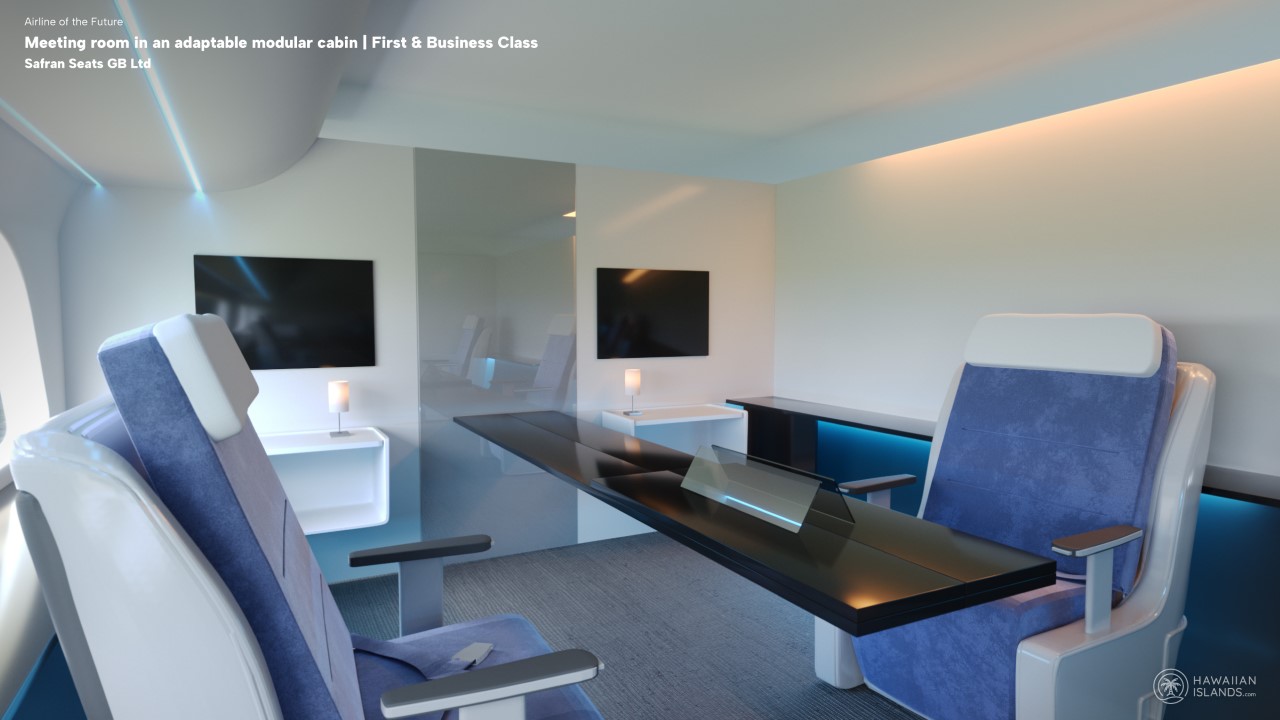
This one is reserved for the business class by virtue of the fact that it’s quite literally meant for business! Designed by Safran Seats, this in-flight meeting room is modular, allowing different configurations and meeting safety requirements. In the air, the room serves as the perfect environment for a long, important business discussion. During take-off and landing, however, partition walls can be stored away and furniture such as tables can be moved from the aisle to allow for easy access. Each seat unit has the capability to accommodate one or more passengers, with the added convenience of being able to convert at least one seat into a comfortable bed.
Upright Sleeping System by Boeing
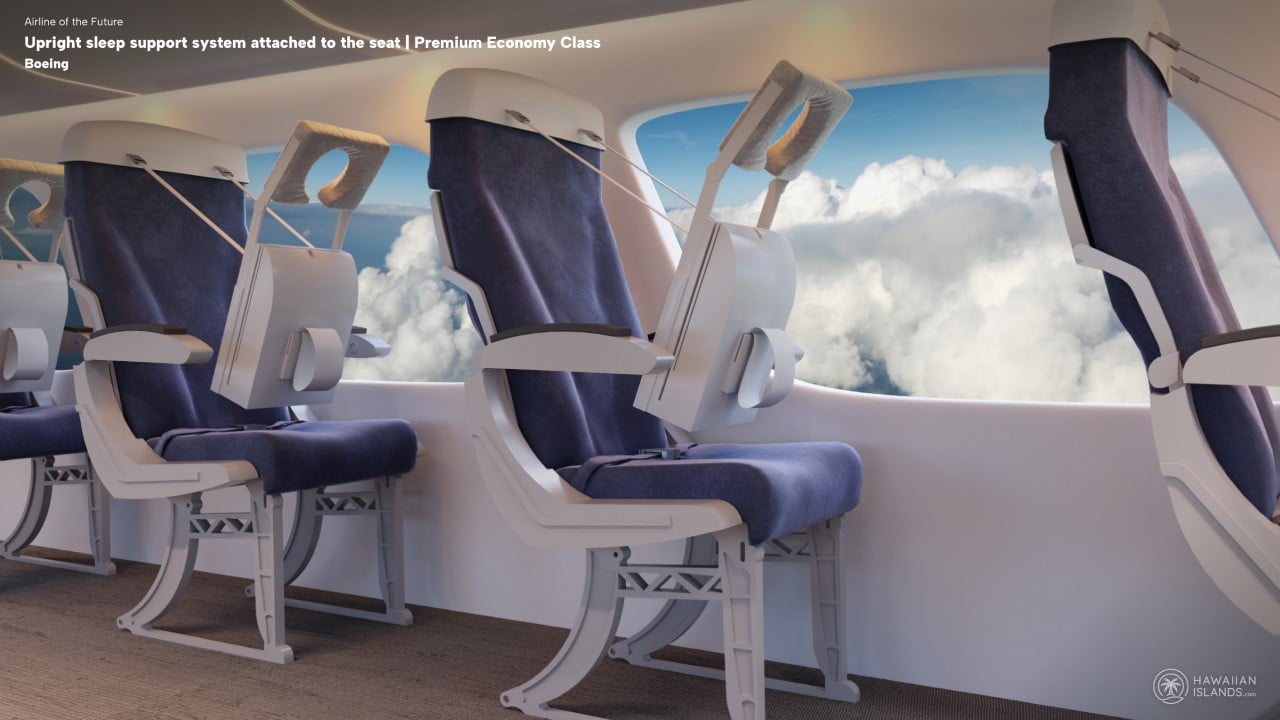
Speaking of comfortable beds, this one from Boeing hopes to give you a better alternative to hunching over your table or collapsing on your co-passenger as you try to get through a red-eye flight. The upright sleeping system is a decidedly odd seat design that helps passengers lean forward and sleep comfortably. Sort of like emulating a massage chair, the seats come with a head pillow to rest your face in as you sleep, and a looped sleeve to rest your arms in so they don’t dangle aimlessly beside you. Doesn’t look great, admittedly, but it’s a lot better than collapsing out of your seat as you try to find a surface to lean against.
In-flight VR Helmets by Airbus
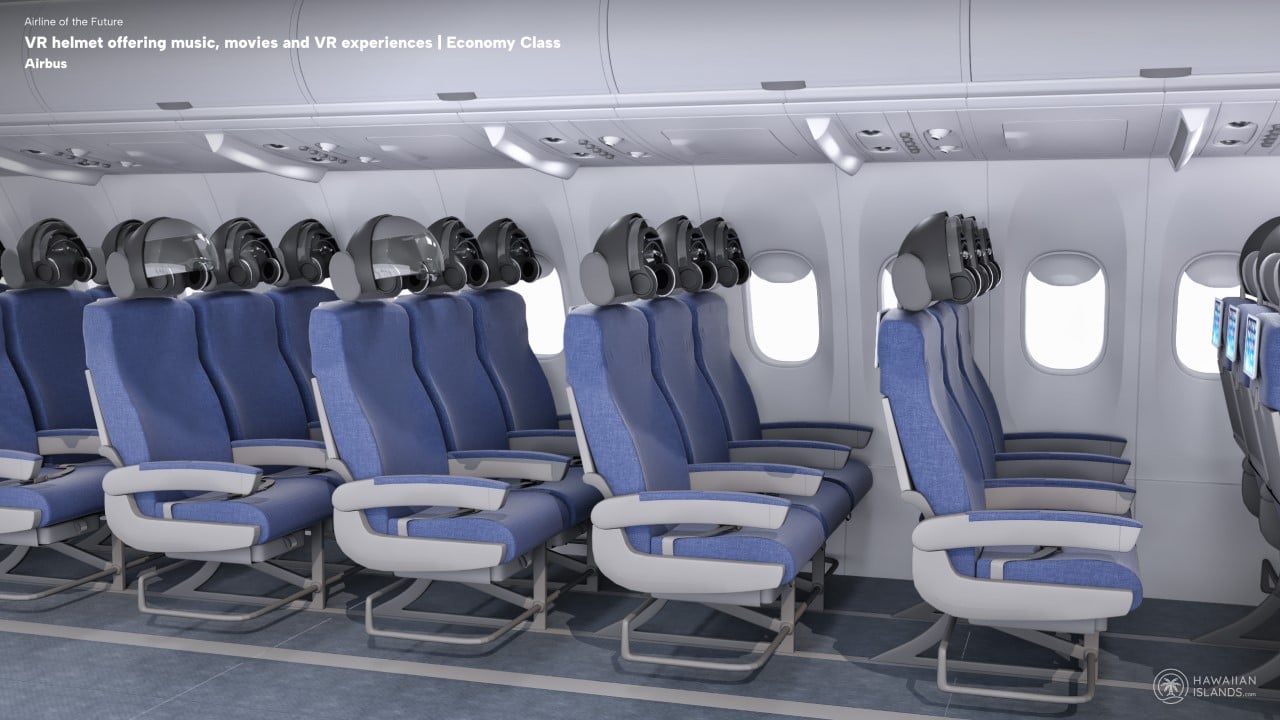
If the idea of a weird contraption to sleep against doesn’t inspire confidence in you, allow me to present a future truly worth being excited about. Detailed out by Airbus, this Economy Class seating arrangement doesn’t have an infotainment system – instead, it has a dedicated VR headset for each passenger, allowing you to truly immerse yourself in a new world as you fly over your existing world. The helmets offer movies, music, and other VR experiences while also allowing you to get some privacy if you want to just sleep in them. They’re even optimized to work as air conditioning units so you don’t have sweat rings on your forehead after 3 hours of binge-watching movies.
Monorail Food Cart by Sell GmbH
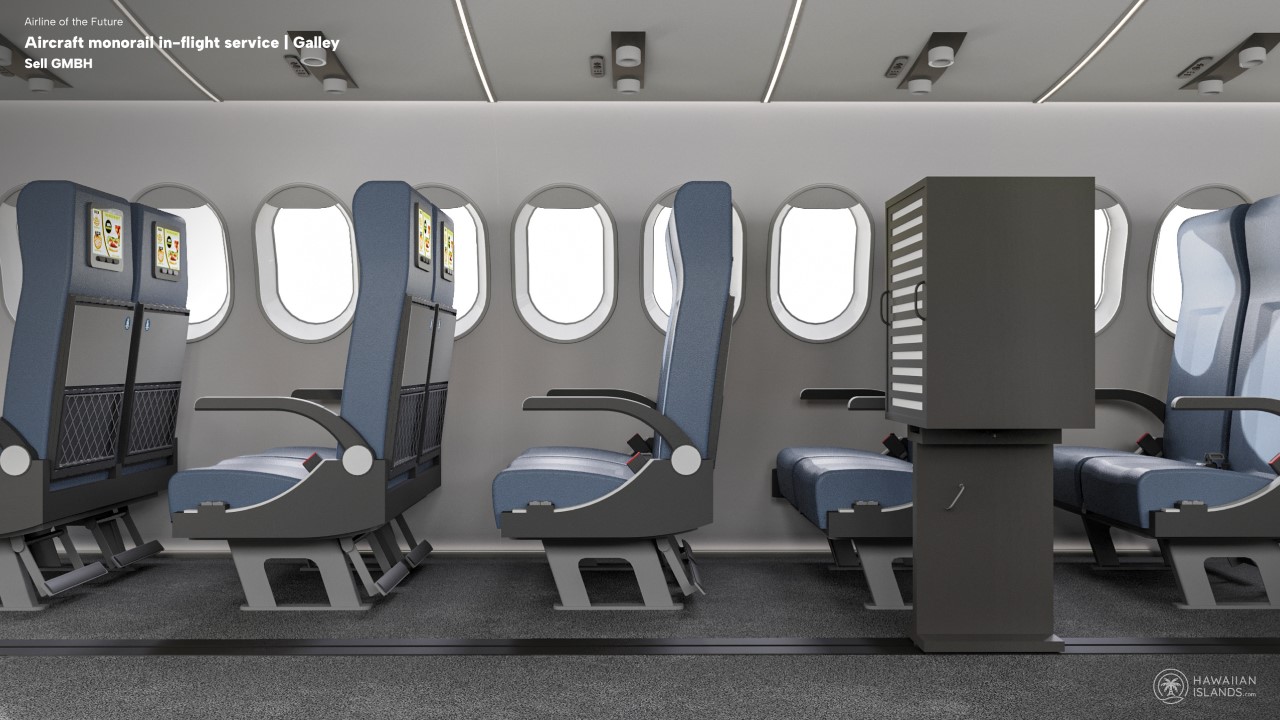
Ever found yourself on a flight that’s just taken off and you absolutely can’t wait for the refreshments trolley because you barely got to eat before the flight? To make matters worse, you’re seated in the middle of the plane, so it’s gonna take a while for the flight crew to get to you. In comes the Monorail Food Cart – a robotic cart that simply glides down the aisle to give you your food. Orders are placed electronically, ensuring the monopod has an efficient itinerary, serving everyone in good time instead of cruising down the aisle row after row and taking practically forever.
Zig-Zag Seating by Zodiac Seats France
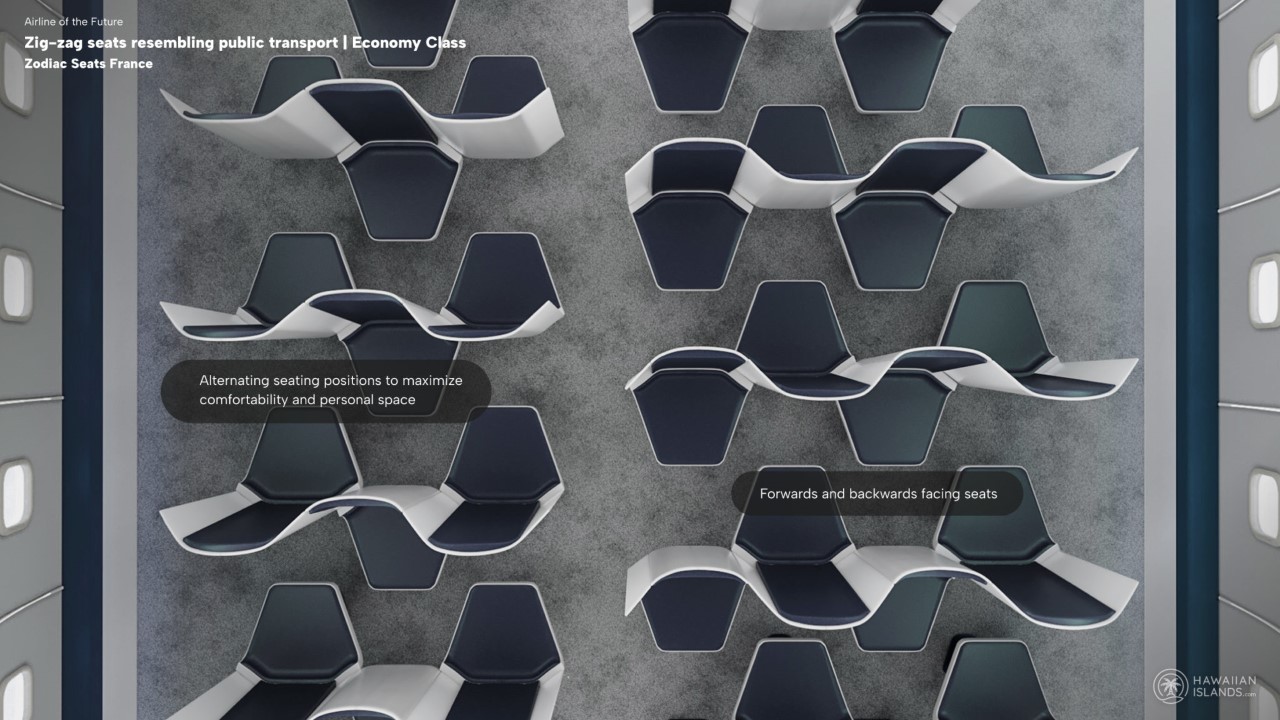
I vaguely remember an airline suggesting a ‘standing section’ for passengers (it was Ryanair, I believe) to help cut costs. While that sounds like a disastrous idea, I don’t put it past airlines to think of new ways to make flying more ‘efficient’. In come the Zig-Zag seats from Zodiac Seats France. They aren’t as bad as Ryanair’s standing seats, but they do propose something weird – a bus-style seating arrangement with people facing each other to help efficiently pack more passengers into the same space. This new setup involves giving each passenger their own private space without having a co-passenger leaning against them. Everyone gets their dedicated space with leg-room, with a significant caveat of not a single seat having armrests. Sigh…
Communal Lavatory by Boeing
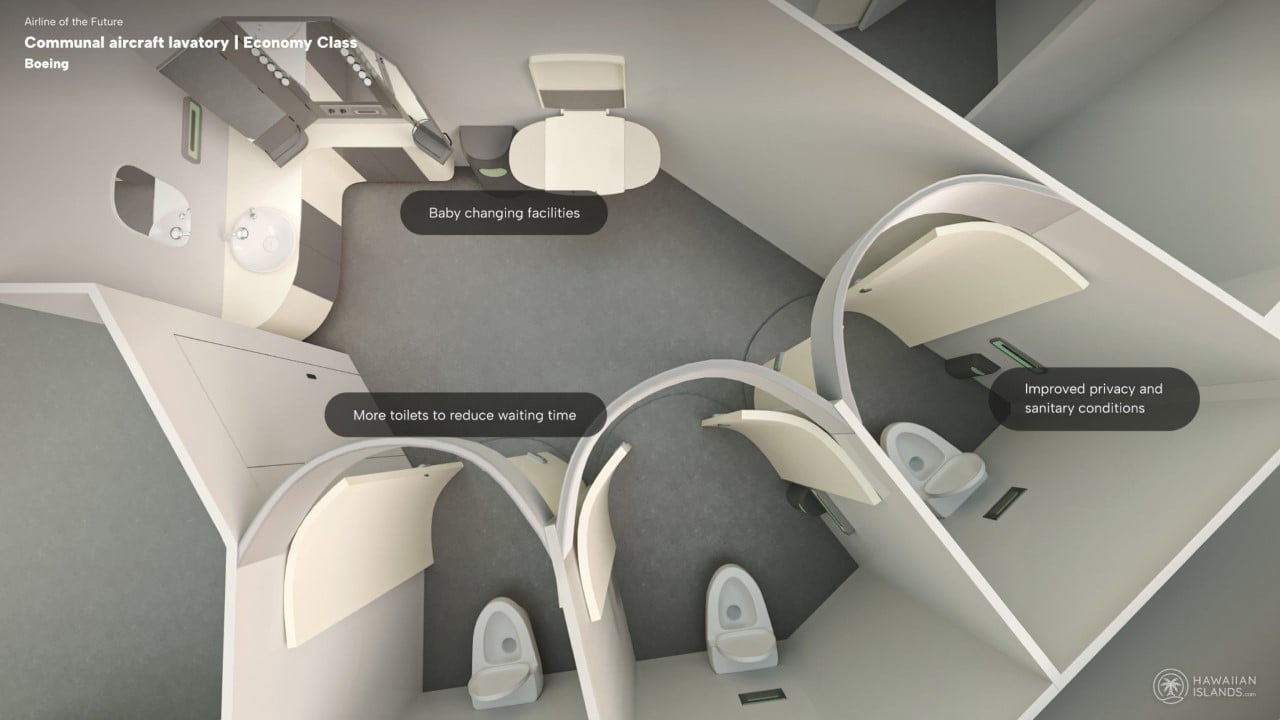
All good things come to an end, and ours ends in the lavatory (quite the metaphor, I say). This communal lavatory by Boeing presents a more natural toilet arrangement where multiple people can access the facilities without having to wait in line. The lavatory comes with one outer area for washing up, and three cubicles for deploying the goods. Boeing also apparently proposes a standing urinal, although I wouldn’t want to step into that lavatory after turbulence…
Image Credits: HawaiianIslands.com
The post Transparent cockpits, VR headrests, etc. Here’s what flights could look like in the future, based on real patents first appeared on Yanko Design.
0 Commentaires